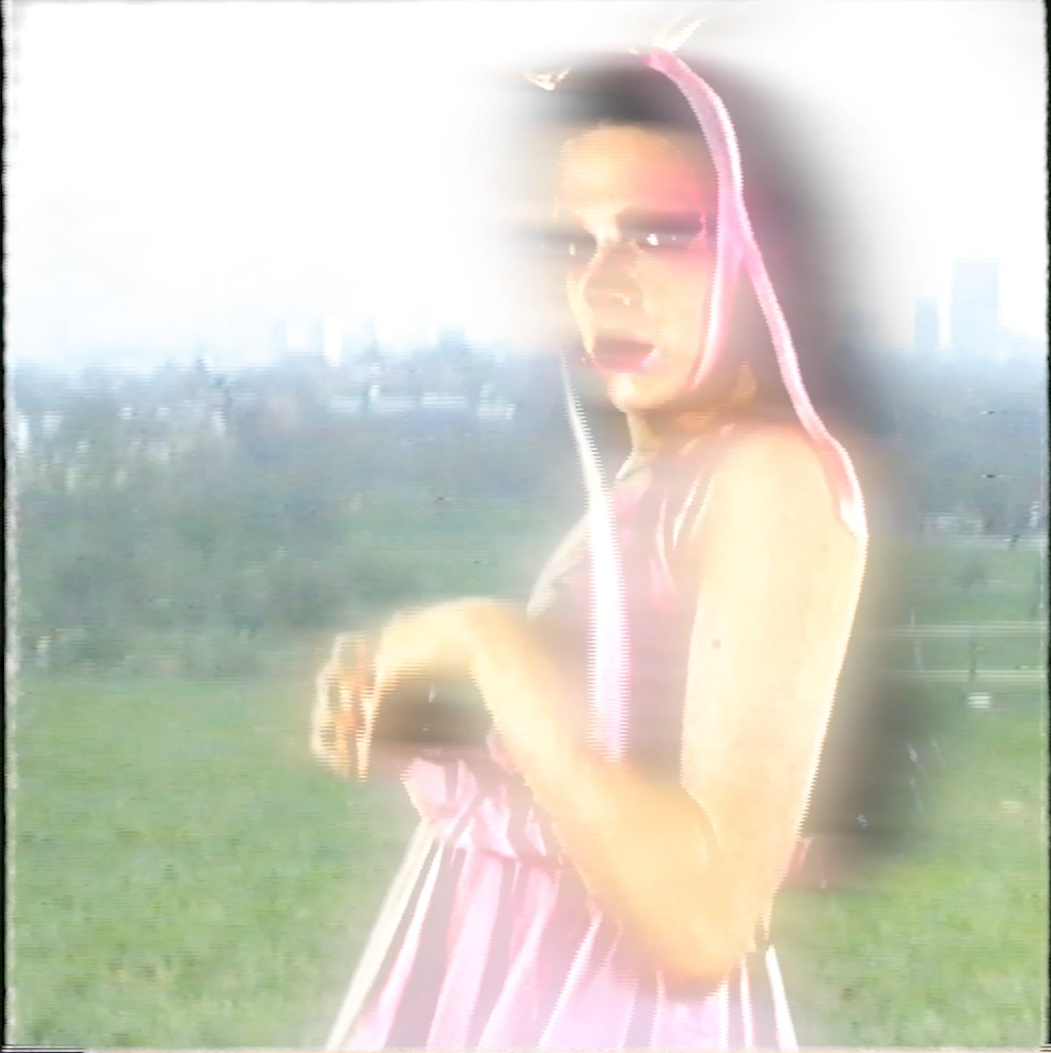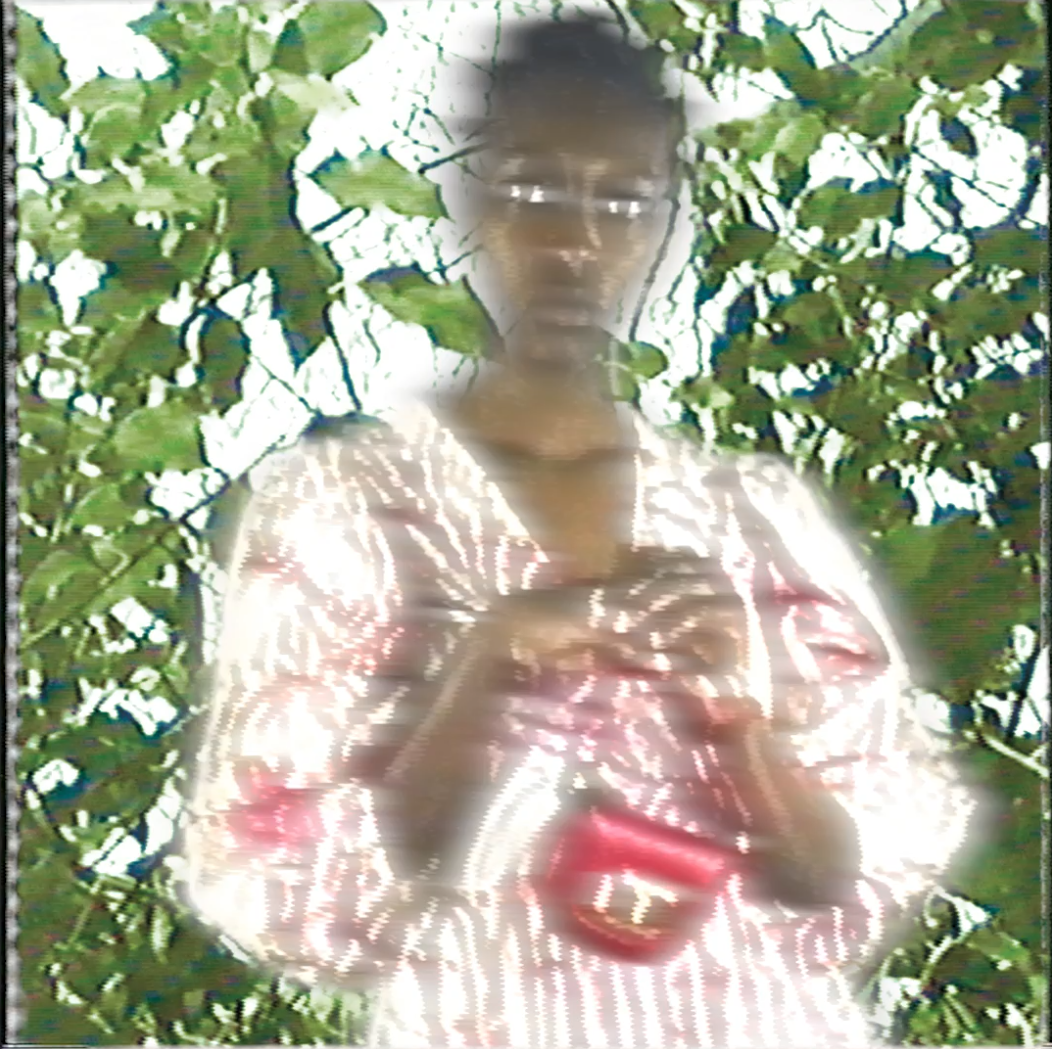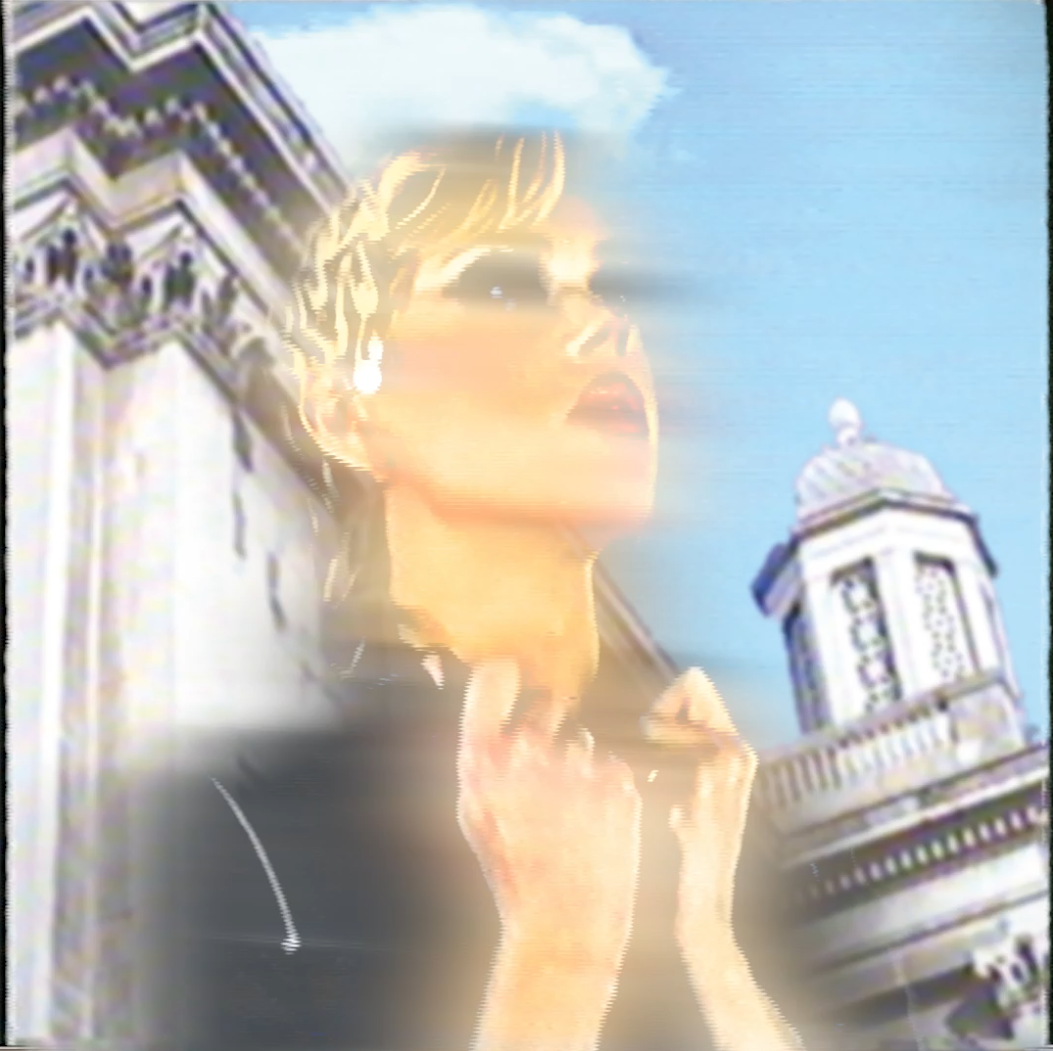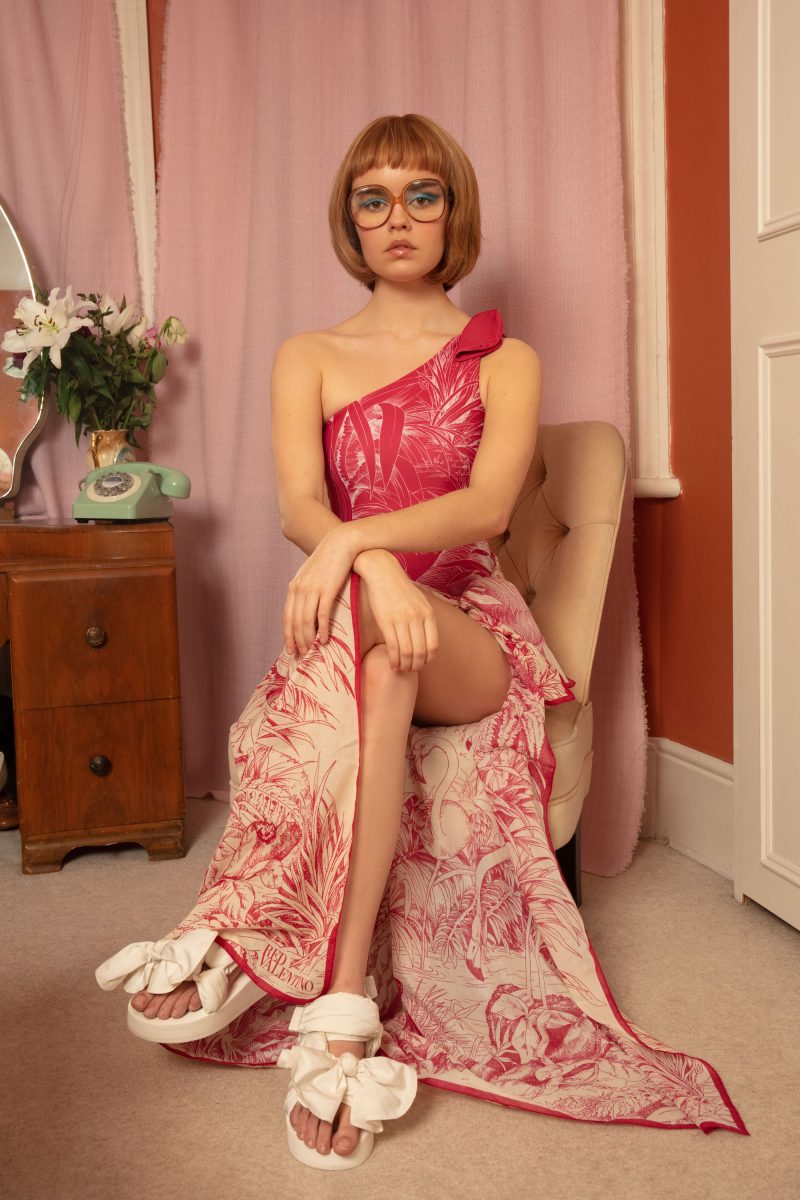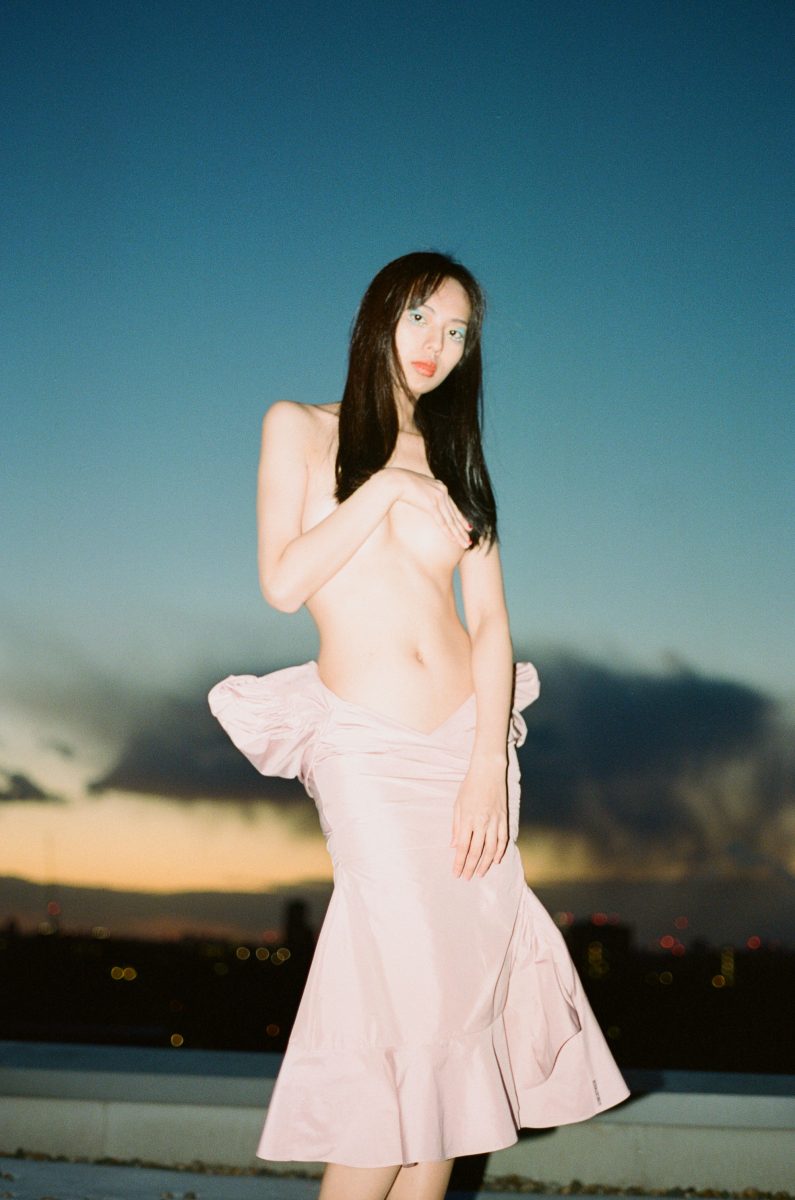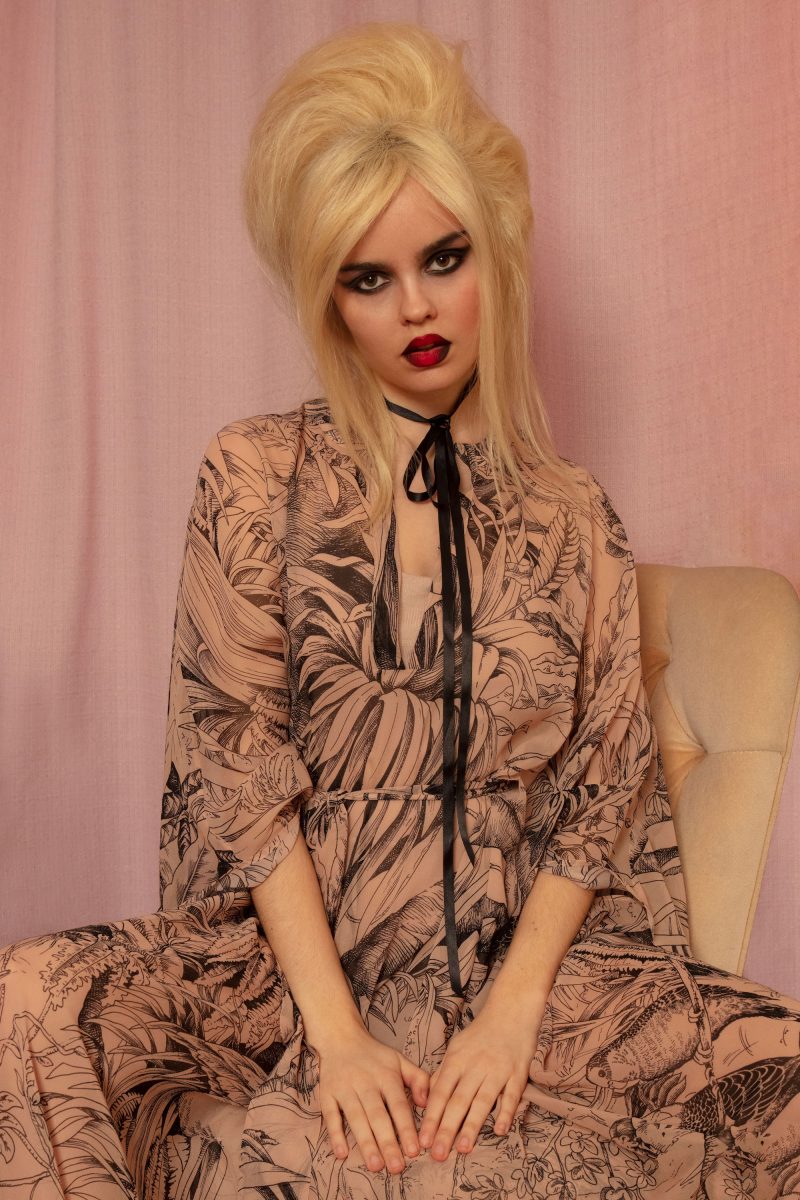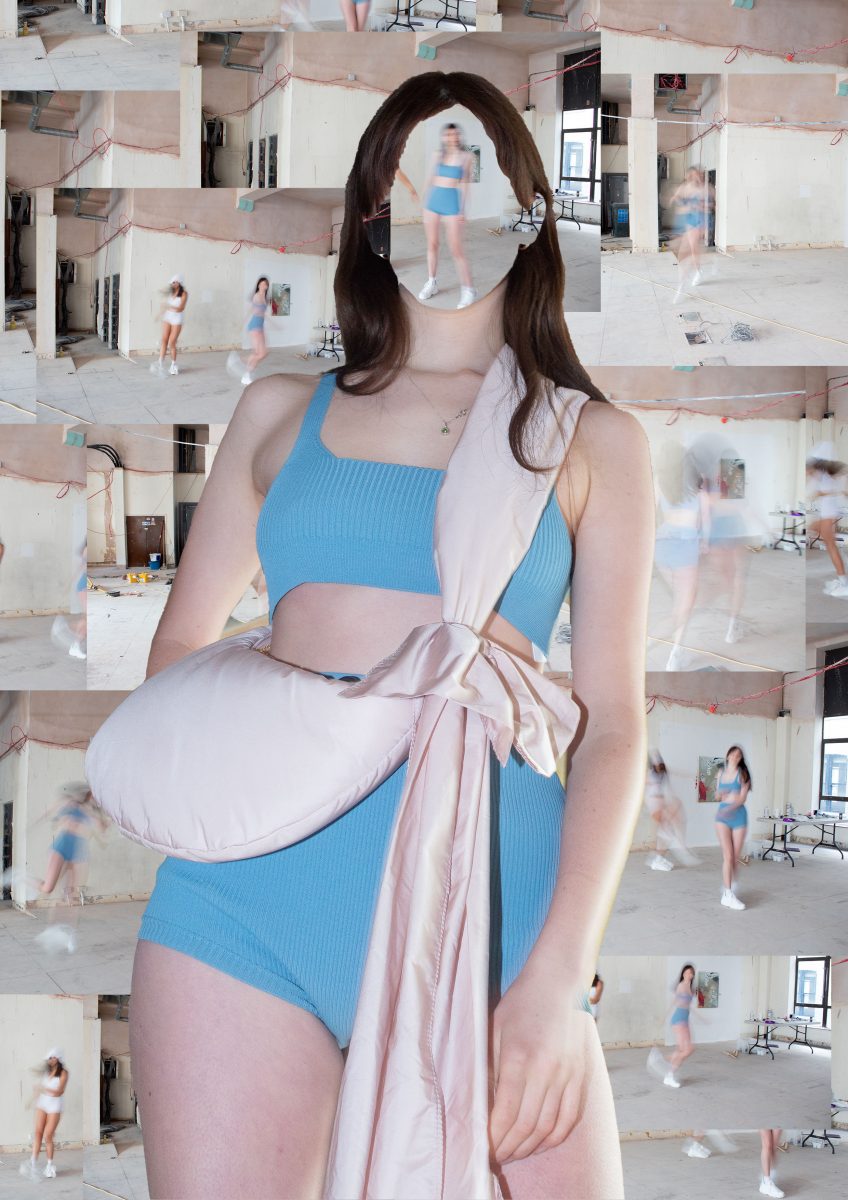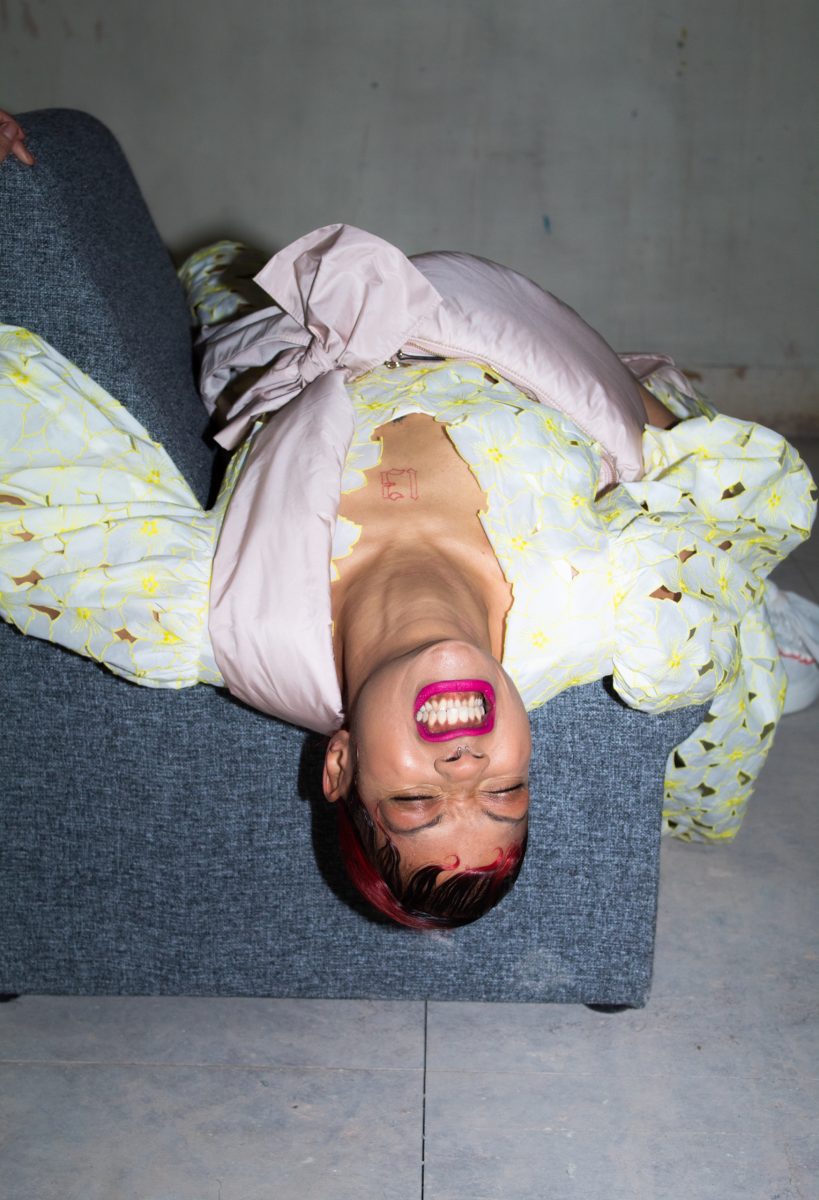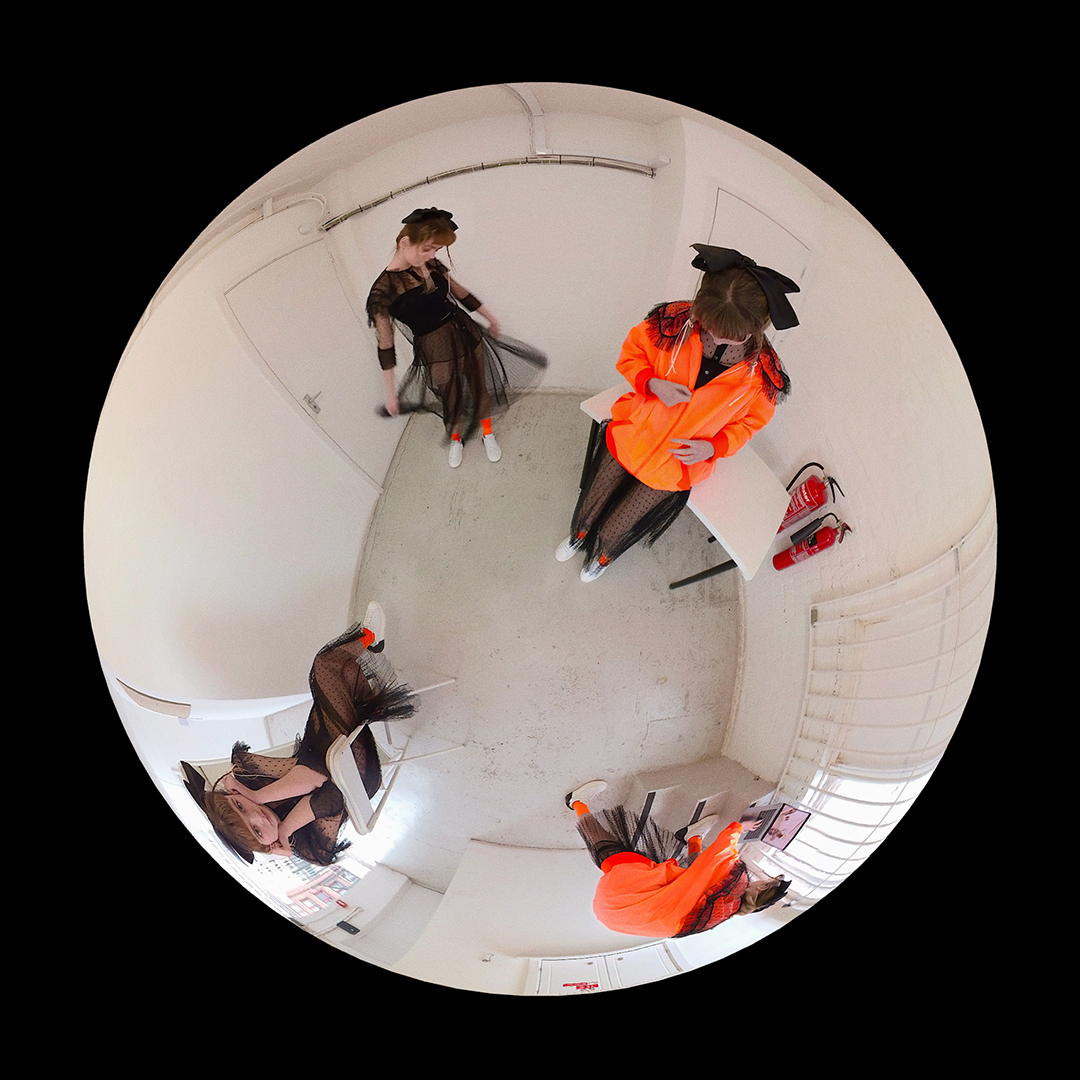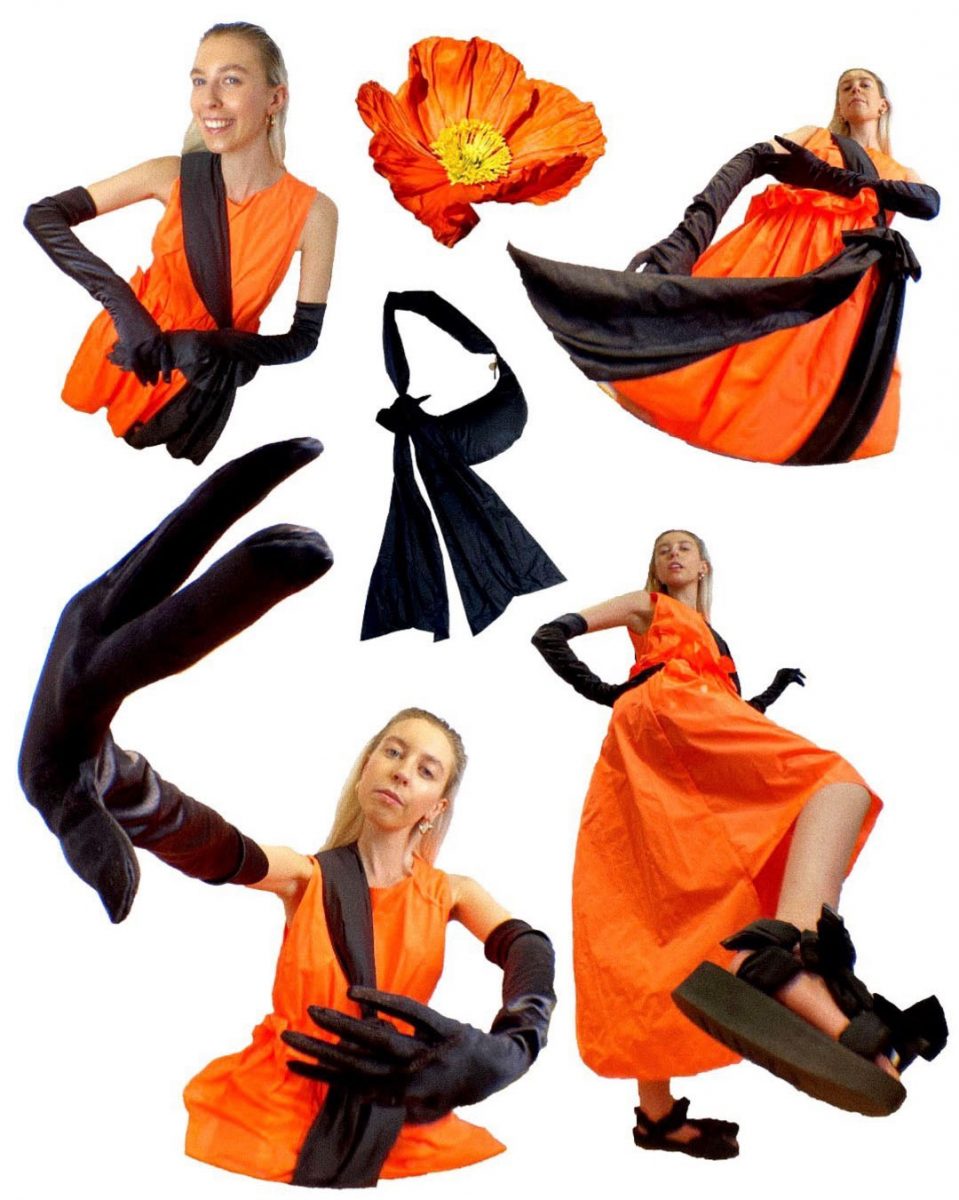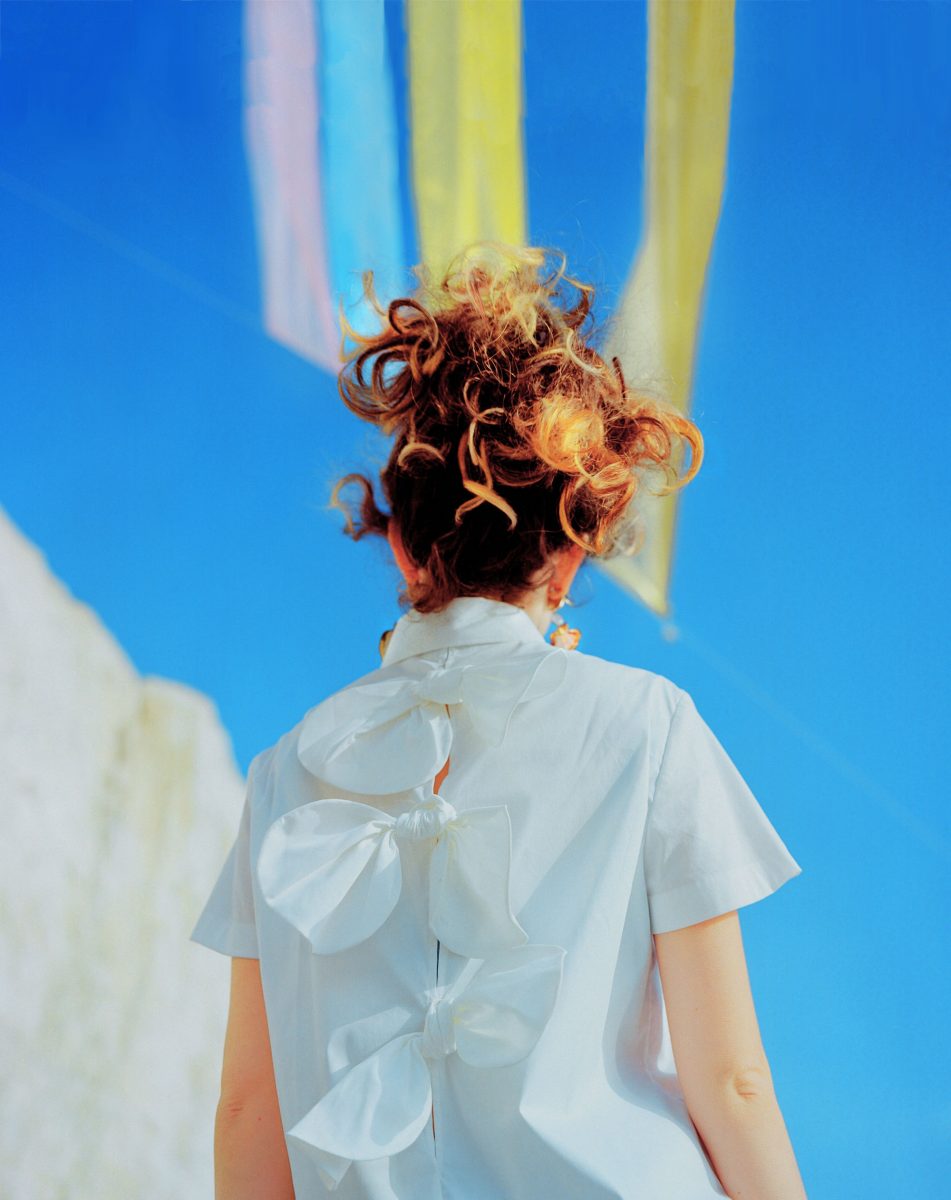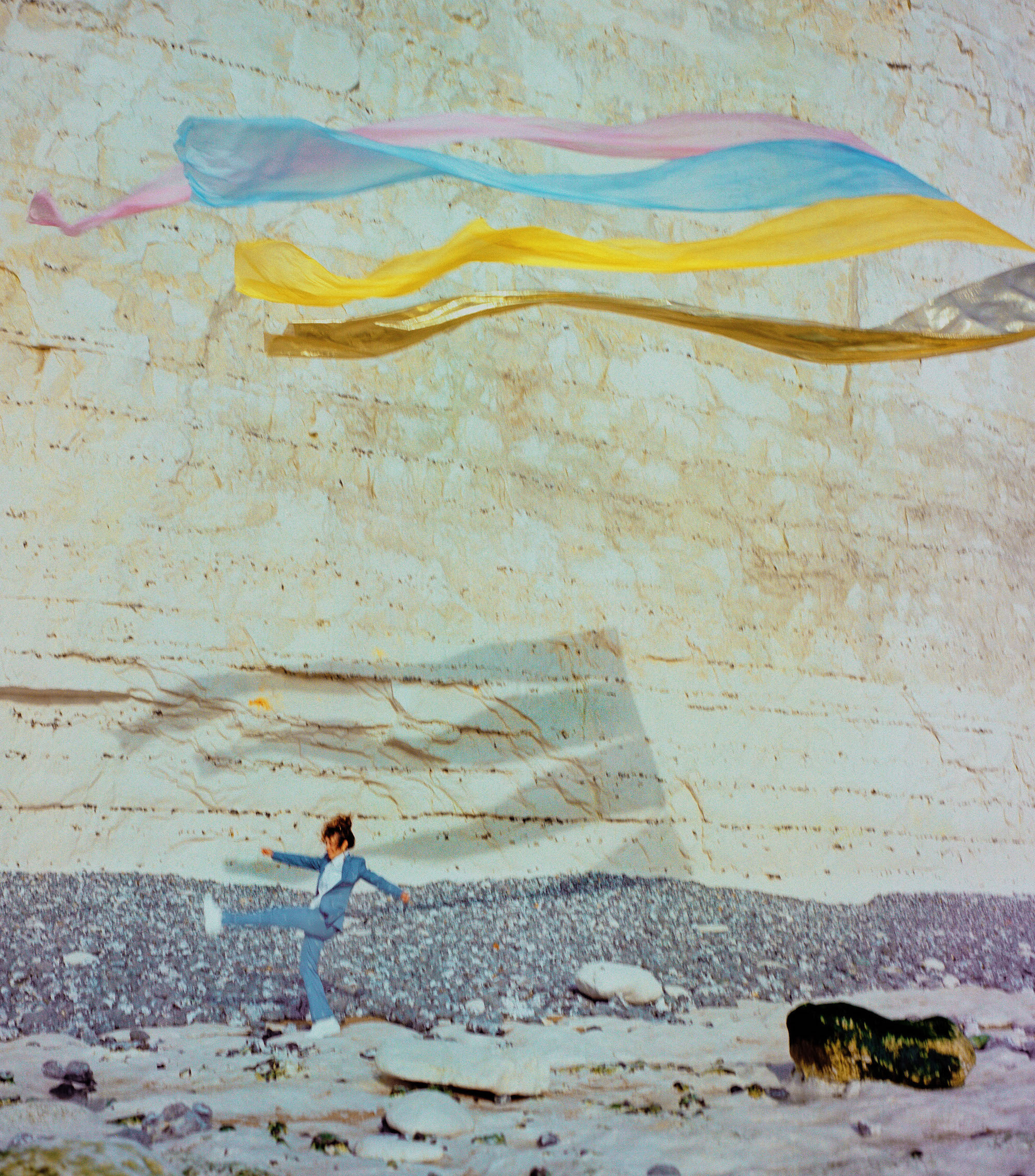
“I see fashion as very close to art,” says Ruby Pluhar. “To me, art is what gives the depth to fashion.” Pluhar is just one of the Central Saint Martins MA students brought together by REDValentino for a special collaboration challenging young creatives to re-interpret the brand’s Spring/Summer ’21 Collection. The result is an incredible range of media that accentuates the delicate intersection between art and fashion.
Pluhar’s work is painterly in its bold compositions, a slip of scarf stretched artfully across a blue sky, its shadow choreographed on a cliff face, echoes the horizontal lines of an outstretched leg. In a short film pastel fabrics ripple in the wind before an arm clad in a cream jacket invades the air. The camera pulls out on two women dancing, the serrated edge of a clifftop cuts into the frame, colours caught between land and sky. On the other end of the spectrum fellow student Aparna Aji evokes a claustrophobic interiority in a dynamic sequence where a pair of eyes peek from a jacket’s armhole and a triad of tight-clad legs splayed in the air recall the sculptural works of Sarah Lucas and Louise Bourgeois.
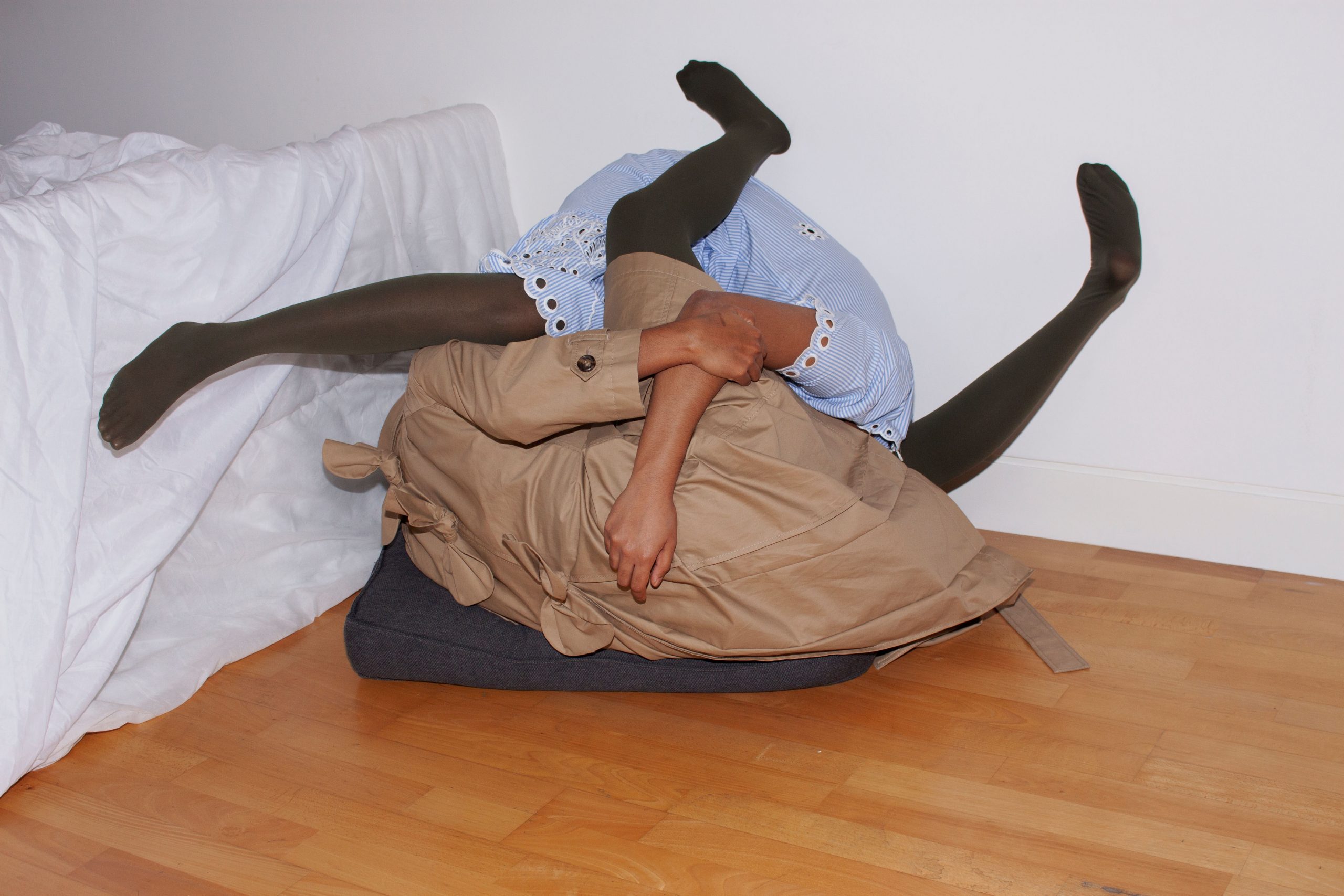
For the collaged compositions of Bluebell Ross, clothes are informative, symbolic elements. A friend stands above the blurred frame of a passing bicycle in a baby-blue dress, a full skirt’s soft femininity undercut by mechanistic lines, cradled by the surreal arc of her own magnified intertwined hands. “My work is very narrative-focused,” Ross notes, explaining how her dreamlike images spring from a story or question. Lowri Cooper presents a similar process with models juxtaposed against patterned backdrops, slices of colour and texture re-situating figures in bold new environments. Martus Chai takes this concept even further, setting cut-outs on blank white backgrounds reminiscent of experiments in early-era Microsoft Paint.
“Eyes peek from a jacket’s armhole and tight-clad legs splayed in the air recall the sculptural works of Sarah Lucas”
Traditional elegance characterises the lipstick-clad cohort of Kallan Hughes, lounging laconically against blush pink curtains, while there’s a more playful edge to Isabella Soliman’s images, where a model bares her teeth and leaps around with Marilyn-style glee, skirts triumphantly held aloft. For Yao Peng these two extremes of old-school glamour and new-age irreverence combine with a statuesque model set against a darkening sky, arm draped across bare chest, pale pink dress gathered around the curves of hellenistic hips.
A fascination with the art of the past feeds the films of Phoebe Wilkinson. Characters on blurred backdrops narrate their lived experience: a trans woman in pink on Primrose Hill, a man in drag against the architecture of a museum, a woman in a floor-length dress swaying to a soundtrack of tittering birdsong in Epping forest. “Nostalgia has been a huge part of shaping every aspect,” she observes. Shooting on VHS, her series of intimate and ethereal vignettes are inspired by experimental films from the 20th century by the likes of Len Lye, Hollis Frampton, and Joan Jonas. The films of Eomji Sim by contrast pivot to a striking modernity. Cloned images of models crowd the screen as the camera swivels, pinwheeling the gatherings into a warped circle before spinning out to capture the “digitally savvy” device-wielding protagonists, the effect as captivating as it is dizzying.
“A great fashion image is one that moves you in some way” Pluhar muses, “I see clothes as the way to marry all my ideas together.” As a bold new generation of image-makers come of age it’s clear from these varied and fascinating interpretations that the fluid, informing relationship between fashion and art persists: as fashion gives life to art, so art gives life to fashion.
